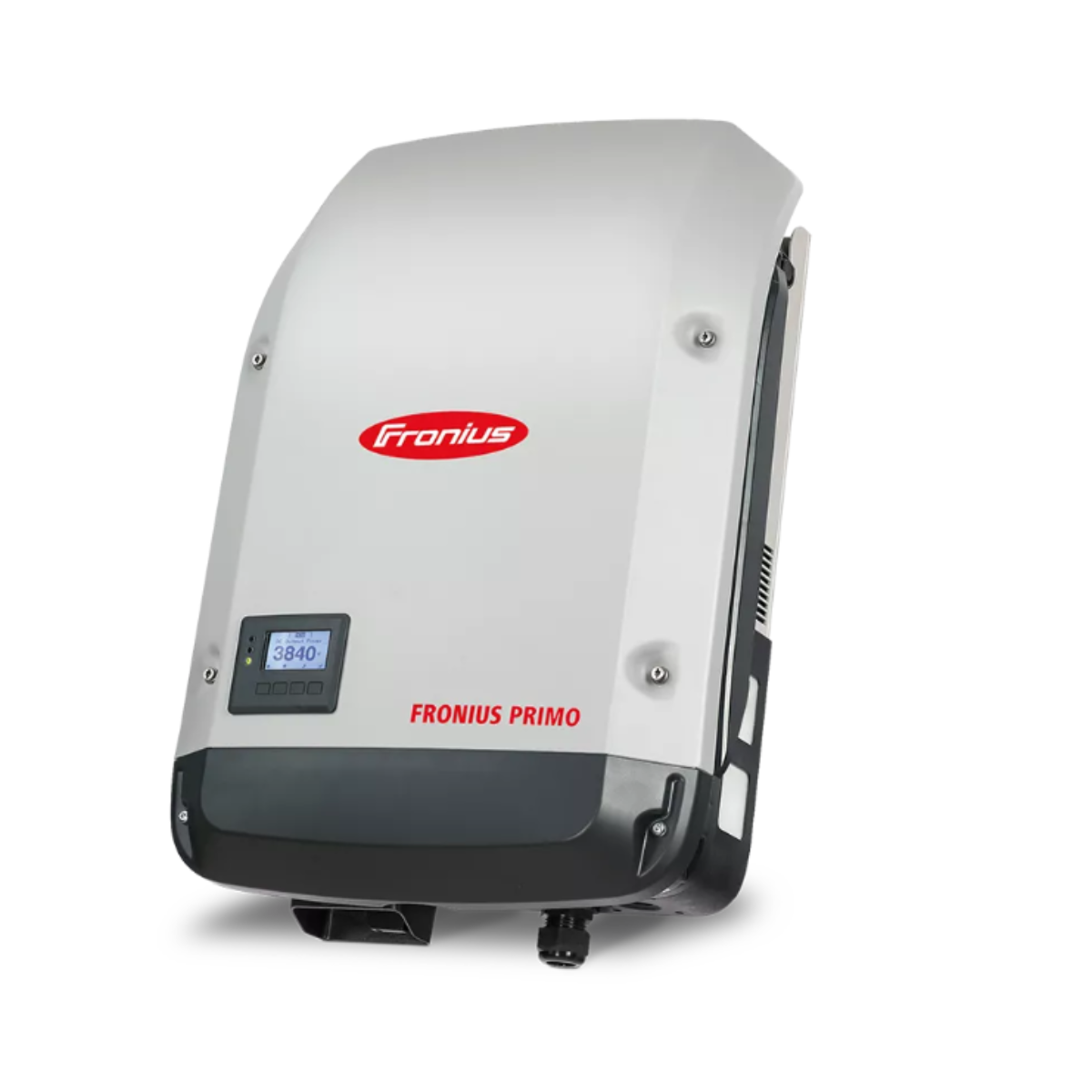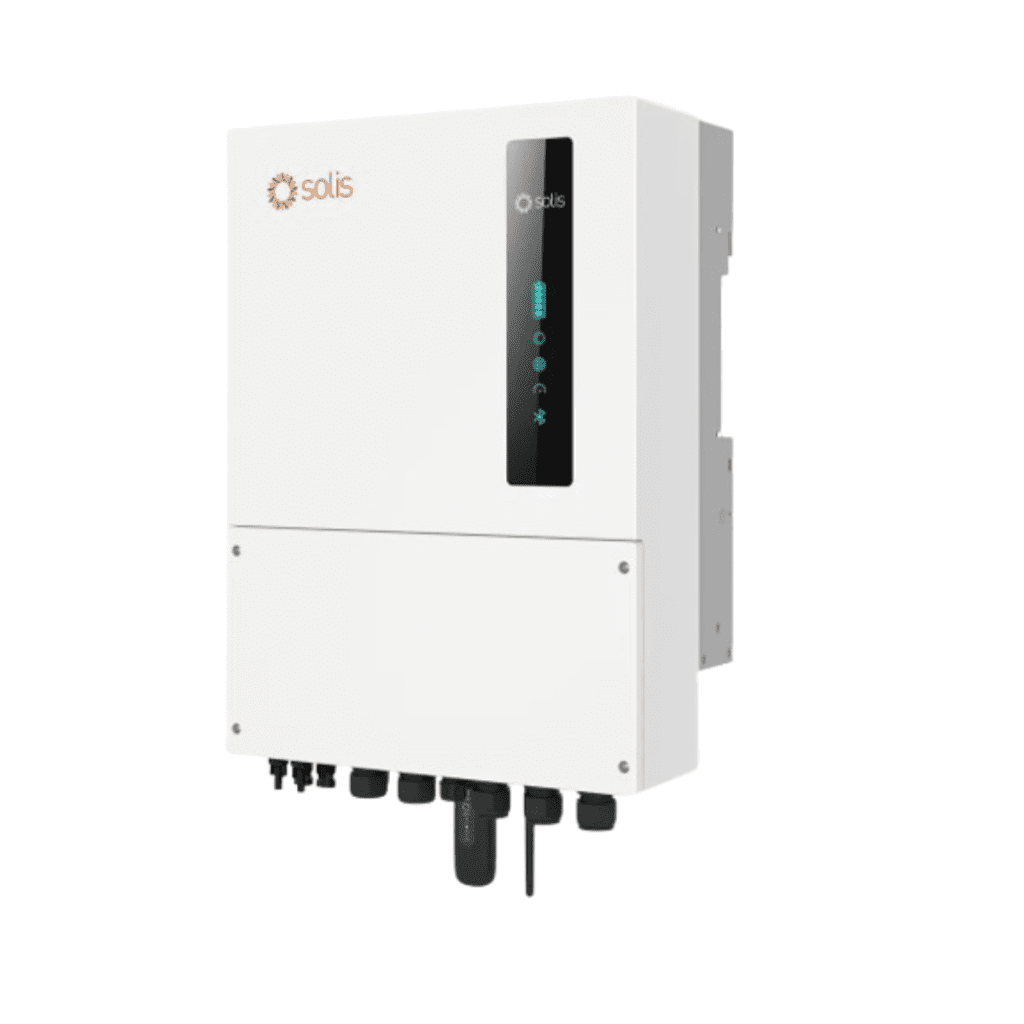Introduction
Among leading inverter manufacturers, Fronius is a standout choice for its highly regarded reputation for innovation and reliability. Its most iconic product is the Fronius Primo Inverter, the most popular choice for single-phase residential solar installations in Australia. In this comprehensive review, we learn why the Fronius Primo is among the best solar inverters of 2025, with a close look at its specifications, models, pros and cons, price point, and suitability for Australian conditions.
What Is the Fronius Primo Inverter?
A Fronius Primo inverter is a transformerless single-phase solar inverter designed for residential and small commercial use. It’s a “string inverter,” i.e., it connects to multiple solar panels wired together in series in a string. These inverters have a reputation for being space-efficient and featuring extras such as dual maximum power point tracking (MPPT), incorporated Wi-Fi and Ethernet for monitoring, and arc fault protection integrated into the inverter.
Key Features of the Fronius Primo Inverter
Here‘s what distinguishes the Fronius Primo from other home solar inverters:
1. High Conversion Efficiency
With a maximum efficiency of up to 97.8%, the Primo ensures minimal energy loss during conversion—translating to higher returns on your solar investment.
2. Dual MPPT Technology
The inverter features two independent Maximum Power Point Trackers (MPPTs), allowing for optimum performance even when your solar panels face different directions (e.g., east-west roofs).
3. SnapINverter Mounting System
The innovative SnapINverter system simplifies installation and servicing. Technicians can mount or remove the inverter front panel without disassembling the entire device.
4. Built-in Wi-Fi & Solar.Web Monitoring
Fronius Primo features built-in Wi-Fi and Ethernet interfaces, offering real-time performance monitoring via the free Fronius Solar.web portal or mobile application.
5. Smart Grid Ready
It complies with Australian grid standards present and future. The inverter can adjust its behavior to help the grid stay stable, with future-proof compliance.
6. Active Cooling Technology
Unlike most passively cooled inverters, the Primo uses active cooling with a fan. This helps maintain performance in hot climates, as required for Australian climates.
7. Long Warranty Options
It has a standard 5-year warranty that can be extended to 10 or 20 years for a small additional cost. This gives homeowners long-term peace of mind.
Fronius Primo Inverter Models
| Model Name |
Power Output |
Max Efficiency |
MPPTs |
Battery Ready |
Ideal For |
| Primo 3.6-1 |
3.6 kW |
97.6% |
2 |
No |
Small homes, limited roof space |
| Primo 4.0-1 |
4.0 kW |
97.6% |
2 |
No |
Small to medium homes |
| Primo 5.0-1 |
5.0 kW |
97.8% |
2 |
No |
Standard 6.6kW solar systems |
| Primo 6.0-1 |
6.0 kW |
97.8% |
2 |
No |
Homes with moderate to high usage |
| Primo 7.0-1 |
7.0 kW |
97.8% |
2 |
No |
High energy usage, future scalability |
| Primo 8.2-1 |
8.2 kW |
97.8% |
2 |
No |
Large households, bigger systems |
Fronius Primo Inverter Technical Specifications
| Specification |
Details |
| AC Output (Rated Power) |
3.6 kW to 8.2 kW (model dependent) |
| Max. Output Current |
15.6 A (Primo 8.2-1) |
| Max. Efficiency |
Up to 97.8% |
| European Efficiency |
Up to 97.0% |
| Input (DC) Voltage Range |
150 V to 1,000 V |
| MPPT Voltage Range |
200 V – 800 V |
| Number of MPPTs |
2 |
| Max. DC Input Current |
22 A per MPPT |
| Min. Feed-in Voltage |
80 V |
| AC Nominal Voltage |
230 V (Single-phase) |
| AC Frequency |
50 Hz / 60 Hz |
| Topology |
Transformerless |
| Cooling |
Active cooling with temperature-controlled fan |
| Noise Emission |
≤ 51.3 dB(A) |
| IP Rating |
IP65 (suitable for indoor and outdoor installation) |
| Operating Temperature |
-40°C to +60°C |
| Communication Interfaces |
Ethernet, Wi-Fi, RS485, Modbus, USB, Fronius Solar.web |
| Dimensions (W×H×D) |
431 × 645 × 204 mm |
| Weight |
Approx. 21.5 kg |
| Standard Warranty |
5 years (extendable to 10–20 years) |
| Grid Compliance |
AS/NZS 4777.2:2020 compliant |
| Installation Type |
Wall-mounted (SnapINverter design) |
Advantages and Disadvantages of the Fronius Primo Inverter
Advantages
Reliability and Durability: Fronius is a respected brand with a superb reputation for reliability and top-notch quality, which in Australian conditions is particularly important. It is made from high-quality materials and is tested strenuously.
Performance: Fronius inverters, for example, the Primo, are well known for offering very efficient and high-performance systems with advanced functionality like MPPT (Maximum Power Point Tracking) for optimal energy production.
Easy-to-use Monitoring: Fronius Solar.web platform provides detailed data analysis and monitoring with direct network connectivity possibilities and multiple ways of accessing it.
Warranty:Fronius includes a standard 10-year warranty with possible extensions for additional peace of mind.
Disadvantage:
Price: Fronius inverters are generally more expensive than other products in the marketplace.
Fan Noise: The Primo’s active cooling fan is audible, particularly on a sunny day.
Warranty issues: Although the 10-year warranty is a definite plus, others say that the latter half of it (5 years parts-only) would be a better value, especially in terms of how replacements are handled.
Limited Battery Charging: The Fronius Primo, in some of its models, is limited in the level of power available for battery charging in relation to some of its rivals.
Some important secrets of solar inverters that you should know?
Fronius Primo Inverter Pricing in Australia (2025)
The cost of a Fronius Primo inverter in Australia depends on the model and installer. Here’s a general price guide:
| Model |
Approx. Price (AUD) |
| Primo 3.6‑1 |
$1,690 |
| Primo 4.0‑1 |
$1,967 |
| Primo 5.0‑1 |
$2,179 |
| Primo 6.0‑1 |
$1,835 |
| Primo 7.0‑1 |
~$2,800 |
| Primo 8.2‑1 |
$1,835 – $2,990 |
Note: Installed prices as part of a solar package can vary. Always compare multiple installer quotes and check for rebates or incentives.
Why Australians Trust Fronius Inverters
Fronius inverters consistently rank among the top solar inverters in Australia, as reviewed by industry experts, Clean Energy Council–approved retailers, and thousands of homeowners.
- Austrian engineering ensures top-tier quality.
- Locally supported with excellent Australian warranty handling.
- Excellent compatibility with most Tier 1 solar panels.
- Regular firmware updates and monitoring tools keep the system up to date.
Fronius Primo by the Numbers
Fronius Primo isn’t just popular—it’s a world number one seller. Across Europe alone, the Primo line moved around 95,000 units, capturing nearly 20% of the residential inverter market and solidifying Fronius as one of the key brands there.
In Australia, Fronius held an end-of-2022 market share of some 23%, dropping only below 15% with a brief supply shortage in 2023—though this shortage has now been resolved. In terms of efficiency, isolated testing shows Fronius Primo models reaching as much as 98.1% peak efficiency, beating most high-end inverters found in the market
FAQs – Fronius Primo Inverter
- Q: Is it possible to add battery storage to my Fronius Primo in the future?
A: The standard Primo models do not support battery integration. You’ll need the Fronius GEN24 Plus series for that.
- Q: Does the Fronius Primo produce any noise?
A: It does have an active cooling fan, which can generate low-level noise, but it’s not normally obtrusive when installed outside or in a garage.
- Q: How many years will a Fronius Primo inverter last?
A: With proper installation and care, a Fronius Primo will last 10–15+ years.
Conclusion: Should You Get the Fronius Primo Inverter in 2025?
If efficiency, reliability, smart monitoring, and future-proof compliance are what you’re after, the Fronius Primo Inverter is a solid option for your solar installation. It’s a good choice for homeowners who want more than a bare-bones inverter—and who are likely to be in their house long enough to see a solid return on investment.
In short, the Fronius Primo is one of the top solar inverters for Australian homes in 2025.





